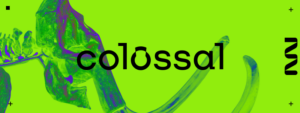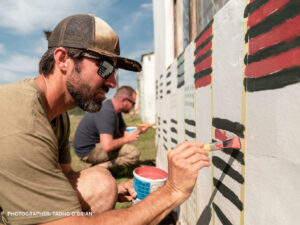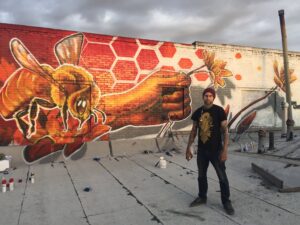How do non-zoological institutions develop innovation and nimbleness? During this pandemic, how have our organizations been impacted and how can we adapt for the future?
A special thank you to David Bland and Laine McGarragle with Strategyzer for leading this discussion about how organizations understand, pivot, and innovate around their business model! Strategyzer’s books and resources mentioned during this ECHO Digital topic are available at the end of this article.
5 Key Points
1. Now is the Time to Think Forward
Although the current times bring tough challenges for our organizations, we can also use this moment to start thinking forward. Now is the time to ask difficult questions and rethink our purpose and value proposition. We can evaluate our operations based on effectiveness, revenue generation, and the impact on our mission. In addition to this internal audit, we should look at our customer segments and explore the value proposition. We serve many different audiences, but what do we offer that they are willing to invest in? How can we maximize this, adapt it, or sunset it?
2. A New Way to do Business Planning
Our traditional business plans are built off historic assumptions that may or may not be applicable moving forward. The COVID pandemic and it’s impacts have shed light on many of these. Rather than looking at traditional strategic planning methods, which are built on these assumptions, the Business Model Canvas is a helpful tool to evaluate our purpose and structures. The conversation we need to have is around shared language and understanding of our business and our goals. Start by asking questions such as: Can you articulate who you are? Would everyone on your team be able to articulate something similar?
3. Organizational Structure
Most of our organizations are structured based on isolated functions and tasks– an outdated model that does not address higher complex tasks. In fact, these higher-value tasks we are trying to accomplish– such as human behavior change, conservation impact, guest experience, and animal welfare– need cross-functional and collaborative teams to take on possible solutions and ideation. Working together across functions will create a team that becomes a task force looking to solve problems and improve the overall organization.
4. Test Little Experiments
Once the organization structure and teams have been established, David Bland, Strategyzer coach, suggests it’s time to start rapid prototyping. “What is the smallest test you can run, with the most to learn from it?” Bring together these small teams to develop and test experiments to improve current practices, fix broken ones, or explore new ones. These experiments need to have a quick turnaround where we can learn from retest and repeat until you’ve landed on something that works. These should be low-cost investments, not huge capital projects.
5. Systems Mapping
Like many companies, we tend to be insular in our thinking and look to similar cultural organizations for trends and development. To be innovative in our business model, we need to look outside of our own industry and map the external factors impacting our business. The coronavirus pandemic is a relevant external factor example, where we are seeing the impact of local and state governments, donor bases, and the corporate culture around us. Take a moment to think about which groups or forces need to be included in your systems map.
ECHO, our annual conference about the future of zoos, is built much like systems mapping where we gather to learn from brilliant thinkers and creative individuals from outside of the zoological community.
Practical Application
Have each member of your senior team download and attempt to fill out the Business Model Canvas (click here to download). Bring everyone together and start to make one cohesive understanding. Evaluate the responses and begin thinking about the following:
• What are the gaps?
• What are the commonalities and differences?
• How might you split up the various businesses within your overall platform?
Resources
Below are books and resources from Strategyzer, which were mentioned during this ECHO Digital conversation.
• Testing Business Ideas
• Business Model Generation
• The Mission Business Model Canvas
For more information on Strategyzer, contact Laine McGarragle.
.
Join the next ECHO Digital
Each month, ECHO Digital is hosted to create opportunities for passionate zoo professionals to connect with innovative ideas from outside the zoo field as well as with other zoo colleagues around the country. To join the next ECHO Digital, email us at echo@glmv.com.




